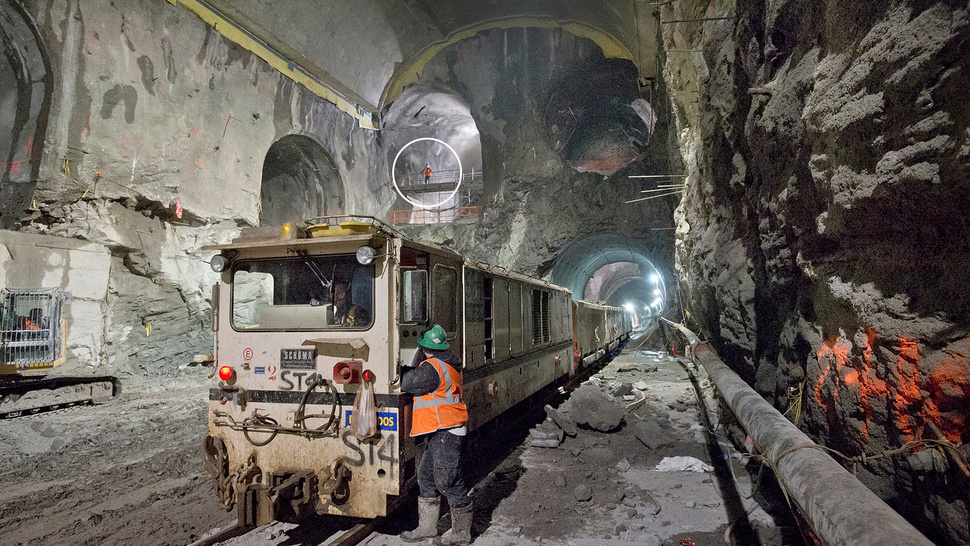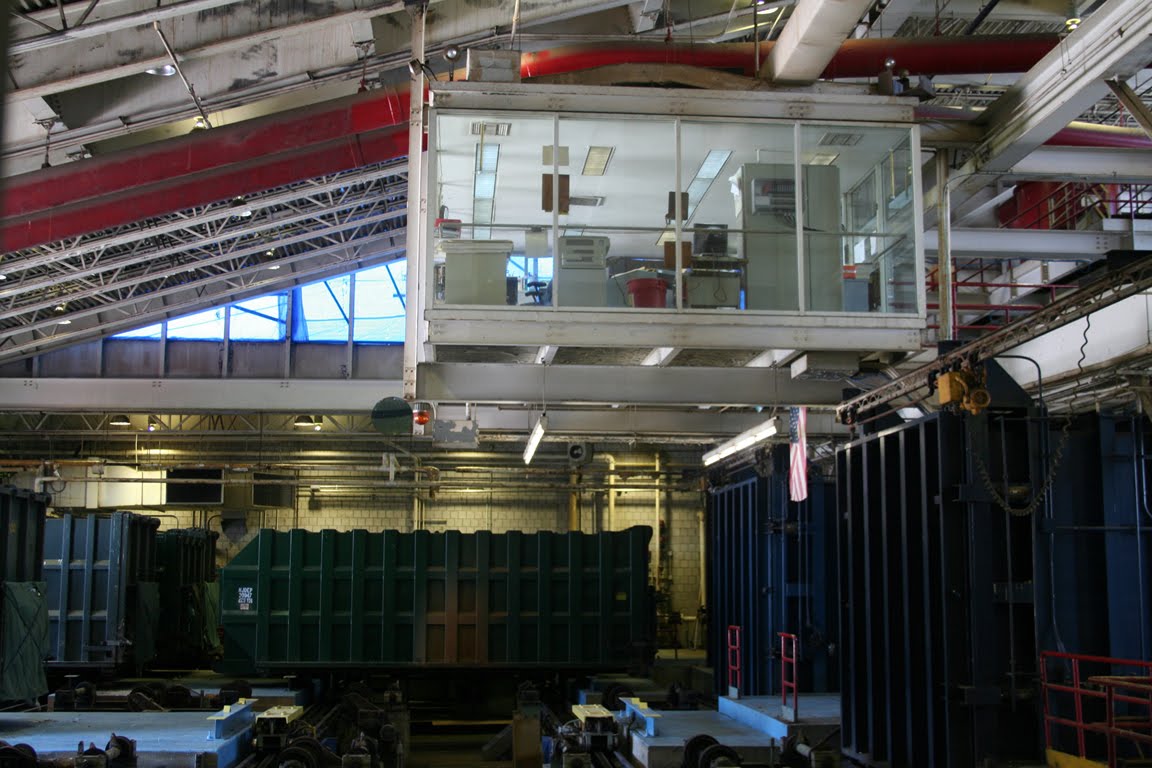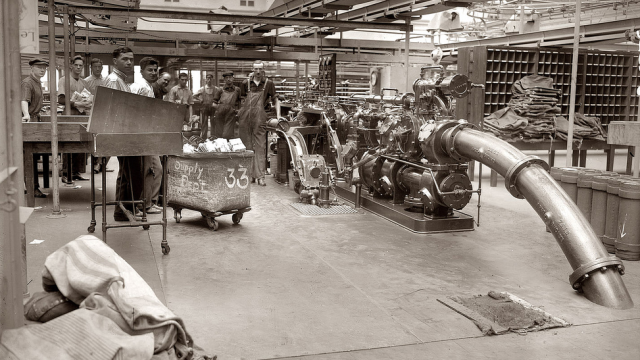New Yorkers have a history of experimenting with pneumatic tubes — both for mail delivery (seen above) and public transport — but only one version ever really stuck: an automated vacuum garbage collection system beneath the streets of Roosevelt Island. According to two recent studies, this 40-year-old relic might hold the key to developing new pneumatic systems — and it could help to solve NYC’s garbage problem.
Here’s the gist of how pneumatic trash systems work: You deposit your garbage at designated chutes either on the street or in your building, which transport the refuse (at high speeds!) through a system of pressurised tubes hidden below the streets. Finally, it arrives at a central plant for processing. It’s cleaner, more efficient, and often less expensive than traditional truck collection, and it’s seen a resurgence of late: The world’s largest system is currently being installed underneath Mecca, where workers are unable to keep up with the trash generated from millions of pilgrims, and both Helsinki and Montreal have announced plans to install similar systems. But for a number of reasons, tubes haven’t been widely adopted in the US.
For the past three years, a research team from the University Transportation Research Center (UTRC) at the City College of New York has worked to evaluate whether such a system could eventually be implemented in Manhattan. And their findings suggest it certainly could — by reducing both the amount of energy needed as well as sheer cost.
According to Juliette Spertus, an architect and project manager on the CUNY study who spoke to Gizmodo this morning, pneumatic tube collection would also improve quality of life in Manhattan by reducing the number of trucks (and trash) on the street. “The system would shift storage away from buildings and towards the neighbourhood scale,” explained Spertus. “You’re collecting waste all the time instead of relying on trucks, reducing rats, waste, and smells.”
But wouldn’t the cost of building a vacuum system below super-dense Manhattan be prohibitive? Yes, which is why it’s so rare to see existing cities implementing pneumatic systems. And while cost will certainly be a major issue in any future plans for a vacuum collection system in New York, CUNY’s research focused on the possibility of installing the tubes as part of existing construction projects — for example, along the under-construction Second Avenue Subway tunnel, or along the High Line viaduct. There are plenty of other caveat to the research, as well; for example, while trucks pollute and waste gas, they only pick up three or four times a week. In comparison, the tubes would constantly move trash, which could end up being less efficient in the long run.

The Second Avenue Subway offers one alternative to digging into city streets to install the tubes. Image via the MTA.
Nonetheless, New York has serious financial reasons to consider a system-wide test. Since its go-to trash dump — Fresh Kills — closed in 2001, the city has paid a high price to relocate its mess to dumps as far away as South Carolina. “The cost of diversion is so high, both environmentally and financially, that any reduction represents money that can be used for other things,” Spertus says. Furthermore, Mayor Michael Bloomberg recently announced the expansion of an organic waste recycling program, which is a far messier and more expensive type of collection than traditional garbage pickup. “We think the tubes are very timely,” Spertus adds, “because it’s not clear how the city is actually going to do that.”
A vacuum-sucking garbage system might sound like part of a 50-year or 100-year wish list for the city, but it may be tested much sooner. Once a beacon of futuristic technology, Roosevelt Island’s pneumatic system is rapidly declining — and soon, the city will need to decide whether to invest in modernising it or switching to traditional truck collection.
What’s more, Roosevelt Island is about to take center stage as the location of Cornell’s new Tech Campus, a huge development that will serve as a hub for sustainability and engineering research. “A tech campus could use pneumatic collection as a platform for all kinds of innovative waste management systems,” Spertus says. “They could try a lot of things that municipal agencies aren’t ready to try.”
If the city decides to renovate the tubes (as the researchers at CUNY hope they will), the island could become a model for future systems. For now, we’ll have to wait to see how the research is received. But it seems — more than a century after it first debuted in New York — the time for pneumatic infrastructure has finally come.



Schematics from the CUNY study show pneumatic systems at work.

The control room of Roosevelt Island’s pneumatic collection system, via Fast Trash.
